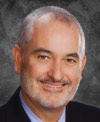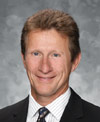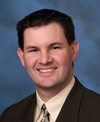RELATED CONTENT

Download Vision Monday's Special Report here
NEW YORK—The managed vision care business has been buffeted by economic and various other factors over the past two years, but those conditions have also created new opportunities for managed vision players large
and small.
Lingering recessionary pressures have shifted eyecare-utilization patterns that had been in place for years, as consumers who fear losing their jobs—and employer-provided health/vision insurance—opt to use those benefits sooner rather than later. At the same time, employers with their own cost pressures have become even choosier about maximizing their health-care expenditures, as evidenced by a continuing shift to “voluntary” vision plans as well as tighter controls on and scrutiny of corporate spending for employee benefits.
Yet managed vision has seen positive developments as well. The move toward expanded “wellness” coverage that began several years ago has become a sweeping trend that has energized many managed vision plans and providers. And the health-care reform legislation passed this year—while needing more definition and tweaking before taking effect in 2014—could provide additional avenues for the managed vision industry.
Recession’s Impact
Despite the recession, 2010 generally has been a positive year for the managed vision business, executives
tell VM.
“It’s been a good, solid year, although we’ve seen the impact of the slow economy like everyone else,” said Gary Brooks, president of VSP Vision Care. He noted that although revenues are not yet back to the “boom” years, VSP is still doing well.

|
|
"It's been a good, solid year, although we've seen the impact of the slow economy like everyone else."
-Gary Brooks, VSP Vision Care
|
|
|
|
|
|
However, Brooks said, employers became more and more cost-conscious as the recession progressed, and VSP is seeing the trend toward voluntary benefits continue, with employees paying more of their health-insurance costs. And with the recession, fewer employees are enrolling in vision plans for the first time. Yet VSP’s retention rate remains positive, according to Brooks, “and next year looks like one of the best in terms of clients who renew and stay with us—in the high 90-percent range,” he said.
Liz DiGiandomenico, president of EyeMed Vision Care, told VM, “The value proposition has been the number one concern of clients lately” as the economy pinches corporate profits. “They want to know exactly what their employee/members will get for their money,” she said.
And as for benefit utilization, DiGiandomenico said, “If consumers know they have a benefit, they’re going to use it in this economy. Our utilization rate is definitely up, a single-digit increase, although we haven‘t seen as much of a blip in utilization this year as we did in 2009—things seem to be stabilizing compared to last year.”
Also on the utilization issue, Rick Corbett, president and chief executive officer of Superior Vision, said his firm has noted an increase of about 3 percent in members’ use of vision benefits due to “recession-driven concerns.” And, he noted, “Employers continue to seek high value and quality from their vision plan provider.”
Steve Holden, president of Davis Vision, commented, “A lot more people are examining every penny they spend these days, with benefit managers checking into all sorts of alternatives—everyone is looking for cost savings anywhere they can.”
|
"In discussions with ECPs, they say they want to be involved in treating medical conditions."
-Liz DiGiandomenico,
EyeMed Vision Care |
|

|
|
|
|
|
Noted Richard Sanchez, president of Advantica and of the managed vision industry’s trade organization, the National Association of Vision Care Plans, “Over the past two years, we saw that employers continued to add vision plans to their offering of benefits to employees; however, we did see some switch from employers funding the vision plans to providing a voluntary plan to employees. In 2011, we see this trend continuing, but we do see employers continuing to add vision as a benefit.”
Some managed vision executives are seeing a brighter side to the lingering economic uncertainly. Said Carl Moroff, OD, chief vision officer of eyeQuest, one of the newer managed-vision players, “The recession has increased the number of people requiring state assistance, and as a consequence we have experienced growth from existing clients whose membership is expanding.
"At the same time, however, health care budgets are stretched tighter than ever, and managed care organizations are seeking ways to lower their operational costs, which puts pressure on all their vendors to be more efficient. We expect this trend to continue as we move toward 2014 and the impact of health-care reform.”
And Erich Sternberg, president of AlwaysCare Benefits, told VM, “We hear anecdotally that the number of people seeking the services of optical retailers or eyecare professionals is off; however, there has been no fall-off in groups or individuals purchasing vision plan coverage. We expect 2011 to be a better year, largely because of pent-up demand. The economy is progressing, theoretically, and we see gradual increases ahead in utilization. People can only put off getting eyecare and corrective services so long to save money; they will still need to take advantage of services to improve their sight and maintain their overall health.”

|
|
"A lot more people are examining every penny they spend these days, with benefit managers checking into all sorts of alternatives."
-Steve Holden, Davis Vision
|
|
|
|
|
|
Andy Alcorn, president and CEO of Block Vision, commented, “Although many of our group clients have expressed concerns about the state of the nation’s economy and the effects on their business, Block Vision has not experienced significant adverse effects on its business. Some of our clients have implemented modest reductions in their work force and others have indicated that they have placed a hold on their plans to expand their staff, but these have been isolated occurrences.”
Alcorn added, “Even among our voluntary plans, we are finding high levels of employee participation, further underscoring the value proposition of vision plan coverage. The fact that cost-conscious employees are choosing to spend for vision plan coverage demonstrates the value that we deliver.”
The ‘Wellness’ Message
As eyecare’s role in identifying and/or co-managing treatment for long-term diseases such as diabetes becomes clearer, managed vision plans as well as their providers are expanding their services to put more emphasis on “wellness” care.
At Advantica, for example, “our plans encourage wellness and the need for members to get their benefit comprehensive eye exam,” said Sanchez. “Health plans are also encouraging their members to include the use of the benefit as part of the preventative program each year, especially for members who are diabetic or are glaucoma candidates.”
|
"We continue to promote a comprehensive and holistic approach to members' health, which includes regular eye exams."
-Jeff Spahr, WellPoint Vision
|
|

|
|
|
|
|
Alan Cohn, chief executive officer and president of Avesis agreed: “Avesis has a diabetic outreach program to encourage eye exams.” In addition, “we have created plan designs with lower copays for the eye exam,” Cohn said.
Companies such as WellPoint that offer general health insurance as well as specialized vision coverage are extremely aware of eye- care’s role in members’ overall health picture, according to Jeff Spahr, staff vice president-vision and voluntary services, for WellPoint Vision.
Spahr told VM, “As part of a multi-line health-care organization, we continue to promote a comprehensive and holistic approach to members’ health, which includes regular eye exams. In addition, many of our member health-improvement programs include notifications to obtain regular eyecare, and we provide clinical alerts to members based on reviewing medical and pharmacy claims.”
Getting the Word Out
Davis Vision has been plugged into the connection between general wellness and eyecare for 12 years, offering outreach programs to encourage eye exams for targeted patient populations and exchanging files with medical insurers, according to Holden. Ramping up its efforts to better communicate the eyecare/wellness connection, in May Davis hired its first-ever vice president of marketing, Tracee Thomson; she will be working to deliver the eye health and wellness message going forward.

|
|
"Health plans are...encouraging their members to include the use of the [eye exam] benefit as part of the preventative program each year."
-Richard Sanchez, Advantica
|
|
|
|
|
|
Another long-time proponent of the eyecare/wellness connection, particularly in the area of diabetes, is VSP, where Brooks said clients have become more interested in that connection. “More and more clients are looking for data on disease detection for their health-management programs,” Brooks added.
VSP now has a specific section of its website called the Center, located at www.vsp.com/cms/the-center, that offers wellness tips along with information on eyewear style and technology. In addition, next year the company will add coverage to provide additional services for members who are diabetic, Brooks said.
DiGiandomenico of EyeMed told VM, “In discussions with ECPs, they say they want to be involved in treating medical conditions. It’s very important to them, and EyeMed wants to support them in that, and to make sure they understand the relevance of what they do in relation to patients’ overall health and wellness.”
In addition to EyeMed’s own strong involvement in wellness events, DiGiandomenico noted the importance of the industry’s Think About Your Eyes (TAYE) campaign in promoting the importance of the eye health/wellness message.
|
"Our primary goal is to make vision and eyecare affordable and available to as many people as possible."
-Carl Moroff, OD, eyeQuest
|
|

|
|
|
|
|
“We consider our vision (and dental) plans as keys to overall health and wellness,” said AlwaysCare Benefits’ Sternberg. “They not only provide immediate benefits such as screenings and glasses or contacts…but let members get a thorough look from professional providers who can spot conditions that serve as advance warning signs for other health issues. We promote these benefits through materials at onsite enrollment events and through our online member portals. We are adding groups all the time with plans that have a wellness component, or that benefit from accessing our wellness resources.”
And Moroff of eyeQuest noted, “Our primary goal is to make vision and eyecare affordable and available to as many people as possible. We work diligently to remove any barriers to entry, from cost, access and administrative. We also work closely with clients to educate members about the importance of quality eyecare, and have special outreach programs for targeted at risk populations such as diabetics.”
“The important role that regular eyecare plays in an individual’s overall well-being and the many medical conditions that can be identified through an eye exam is a key message Block Vision imparts to our clients, prospective clients and enrolled members,” Alcorn noted. “This is a message that is resonating with our constituents, especially as increased emphasis is being placed on wellness programs and preventative health. We’ve found that providers are well-attuned to this message.”
—
Cathy Ciccolella, Senior Contributing Editor